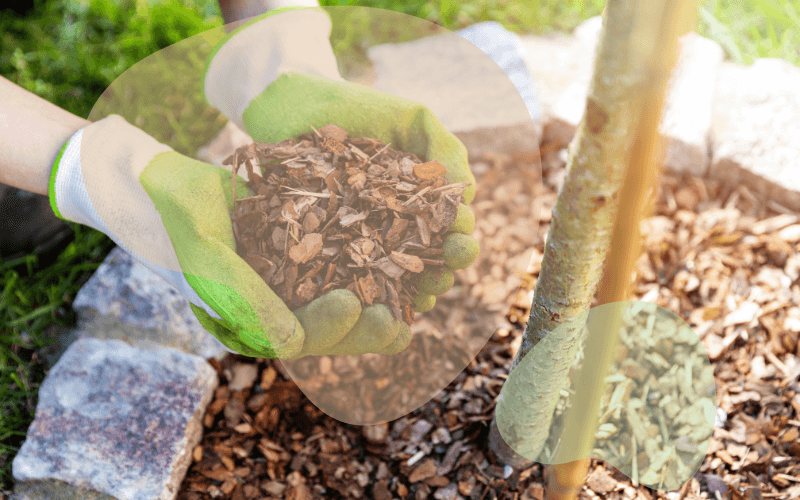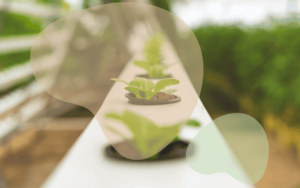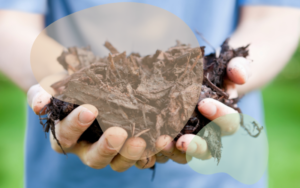Mulching is one of the most beneficial yet simple practices in gardening. It involves covering the soil around plants with materials like straw, wood chips, or even plastic to improve soil health, control weeds, and retain moisture. For beginner gardeners, understanding the best mulching techniques can transform a garden from mediocre to flourishing. This guide explores various mulching methods, focusing on how to mulch a garden for beginners and delving into both organic mulching techniques for gardens and inorganic options.
What is Mulching in Gardening?
At its core, mulching is a protective layer placed on the soil’s surface. This layer can be organic (like compost, straw, or leaves) or inorganic (like plastic or gravel). Mulch serves as a barrier, regulating soil temperature, conserving water, and suppressing weed growth.
Why Mulch Your Garden? Benefits for Beginners
Mulching offers numerous advantages:
- Moisture Retention: Reduces water evaporation, meaning you’ll water less often.
- Weed Suppression: Prevents sunlight from reaching weeds, minimizing their growth.
- Soil Health: Organic mulch enriches the soil as it decomposes, improving fertility.
- Erosion Control: Prevents soil from washing away during heavy rain.
- Temperature Regulation: Keeps roots cool in summer and insulated in winter.
- Aesthetic Appeal: Gives your garden a polished, uniform look.
Mulching Basics: A Beginner’s Guide
Step-by-Step Guide to Mulching for Beginners
- Prepare the Soil:
- Remove existing weeds to prevent them from growing under the mulch.
- Loosen the topsoil and add compost if needed to improve fertility.
- Choose the Right Mulch:
- Consider your garden’s needs. For vegetables, organic mulch like straw or compost is ideal. For landscaping, wood chips or gravel might be better.
- Apply the Mulch:
- Spread a 2–3 inch layer evenly over the soil, keeping it a few inches away from plant stems to prevent rot.
- Maintain the Mulch:
- Replenish organic mulch as it decomposes to maintain its benefits.
- Monitor for pests that might hide in thicker layers of mulch.
Common Mulching Mistakes to Avoid
- Over-mulching: Too much mulch can suffocate roots and lead to waterlogging.
- Improper Placement: Mulch touching plant stems can cause rot.
- Using Contaminated Materials: Mulch with weed seeds or chemicals can harm your garden.
Organic Mulching Techniques for Gardens
Organic mulch is derived from natural materials and breaks down over time, enriching the soil.
- Straw or Hay:
- Great for vegetable gardens, suppressing weeds, and retaining moisture.
- Avoid hay with weed seeds.
- Compost:
- Provides nutrients and improves soil texture.
- Spread a thin layer to prevent overheating.
- Wood Chips:
- Long-lasting and aesthetically pleasing for paths and around perennials.
- Avoid fresh wood chips around vegetables, as they can tie up nitrogen.
- Grass Clippings:
- A free and eco-friendly option, ideal for vegetable beds.
- Apply in thin layers to prevent matting.
- Leaves:
- Shredded leaves enrich the soil and suppress weeds.
- Avoid whole leaves, as they can form a water-resistant layer.
Advantages of Organic Mulch for Soil Health
- Gradually improves soil fertility.
- Encourages beneficial microbes and earthworms.
- Creates a natural, eco-friendly garden environment.
Best Inorganic Mulching Methods
- Plastic Mulch:
- Commonly used in vegetable gardens to retain heat and moisture.
- Available in black (for weed suppression) and clear (for warming soil).
- Requires careful installation to avoid suffocating plants.
- Gravel and Pebbles:
- Ideal for arid climates or decorative landscaping.
- Provides excellent drainage and prevents soil erosion.
- Rubber Mulch:
- Made from recycled tyres, it’s durable and long-lasting.
- Best used in playgrounds or around ornamental plants, as it doesn’t benefit soil.
- Rock Mulch:
- Aesthetic and effective for pathways or xeriscaping.
- Not recommended for areas requiring soil enrichment.
Pros and Cons of Inorganic Mulch
| Pros | Cons |
| Long-lasting and low maintenance | Does not enrich soil |
| Effective at suppressing weeds | Can increase soil temperature excessively |
| Ideal for decorative purposes | Removal can be difficult if needed |
Mulching by Purpose: Matching Materials to Your Needs
Mulching for Weed Prevention and Soil Health
- Best Materials: Black plastic, straw, or wood chips.
- Why? They effectively block sunlight and prevent weed seeds from germinating.
For Moisture Retention
- Best Materials: Grass clippings, leaves, or compost.
- Why? Organic materials lock in moisture while improving soil quality.
For Seasonal Protection
- Winter: Use straw or shredded leaves to insulate plant roots from frost.
- Summer: Apply wood chips or grass clippings to keep soil cool and prevent evaporation.
Purpose of Mulching for Small Gardens
- Best Materials: Mulch mats or shredded bark.
- Why? They are easy to manage in confined spaces and visually appealing.
Mulching for Vegetable Gardens
Vegetable gardens benefit immensely from mulch, which improves yields and reduces maintenance.
Best Organic Mulch for Vegetable Gardens
- Compost: Provides essential nutrients for crops.
- Straw: Keeps fruits like strawberries off the soil, preventing rot.
- Grass Clippings: Ideal for nitrogen-loving crops like tomatoes and peppers.
Plastic Mulch for Vegetable Gardening
- Used to warm the soil for heat-loving crops like melons and peppers.
- Lay down before planting and cut holes for seedlings.
Affordable Mulching Materials
- Newspaper: Layer 4–6 sheets and cover with a thin layer of soil or straw.
- Cardboard: A great base layer for suppressing weeds in large gardens.
Maintaining Your Mulch Layer
How to Replenish and Maintain Mulch
- Check mulch regularly for signs of decomposition or thinning.
- Add fresh mulch to maintain a 2–3 inch layer.
- Stir mulch occasionally to prevent compaction and improve air circulation.
Tips for Mulching Around Trees and Shrubs
- Create a mulch ring around the base, keeping it 2–3 inches away from the trunk.
- Avoid volcano mulching (piling mulch against the trunk), which can lead to rot.
Conclusion: Mastering the Best Mulching Techniques
Mulching is an essential practice for any gardener, offering benefits ranging from weed suppression to soil health improvement. For beginners, focusing on how to mulch a garden for beginners and understanding the differences between organic mulching techniques for gardens and inorganic methods can simplify the process.
Whether you choose straw for your vegetable patch or gravel for a decorative bed, the best mulching techniques are those that meet your garden’s unique needs. Experiment with materials, observe their effects and adjust as needed. With proper mulching, your garden will thrive, rewarding your efforts with lush growth and bountiful harvests. Happy gardening! 🌱




